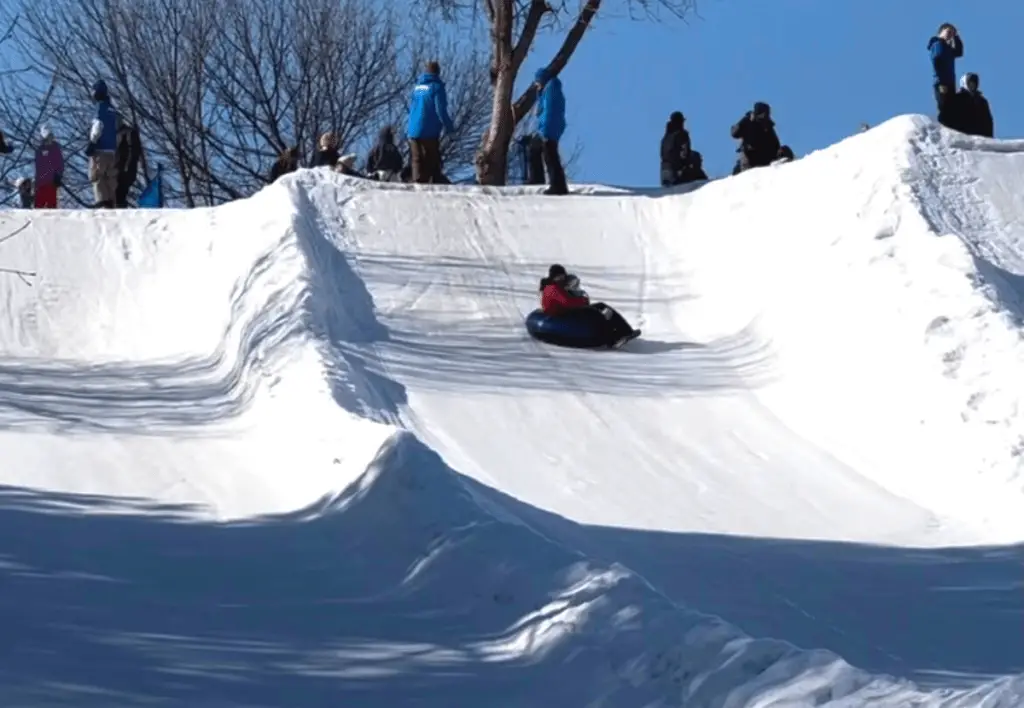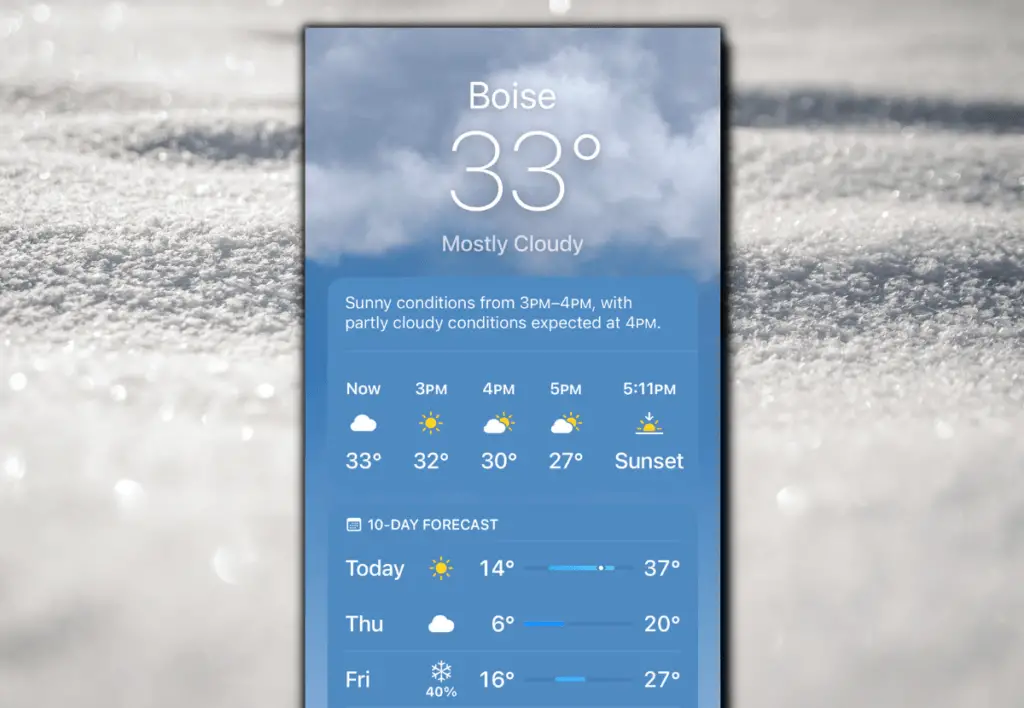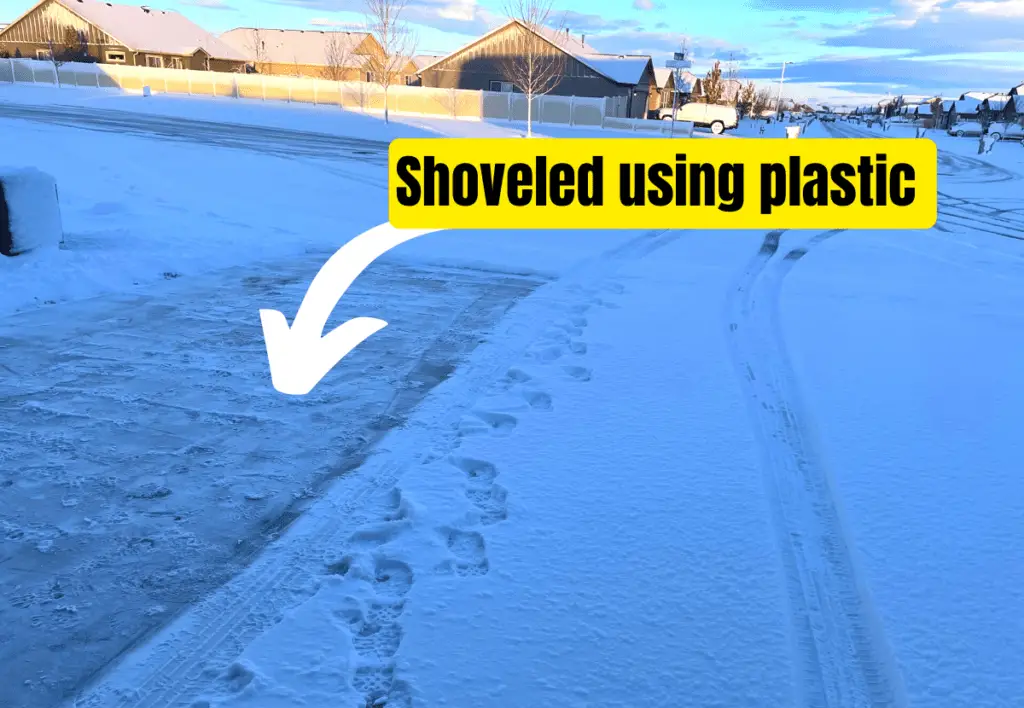If you’re thinking about traveling or moving to Boise, then you might be wondering what Boise winters are like. It’s important to know what to expect so you can come prepared—or not.
Having lived in Boise all my life, I’ve been through multiple winter seasons. Now I want to share everything I know with you.
In the winter Boise is chilly with an average high of 41°F and a low of 24°F. The average snowfall in the city ranges from 18 to 40 inches, with the foothills receiving well over 100 inches. The coldest winter month is January as daytime highs only reach 24°F and dip into the teens by night.
Below you’ll learn exactly what Boise winters are like.
What Is Boise Like In the Winter?
Just as you’d expect, winters in Boise are fairly cold with a decent amount of snowfall. If you’re visiting or moving from an area with year-round warm weather, adjusting to Boise’s sub-freezing temps can be difficult.
Not only is it hard on your body (your joints ache, your nose and skin get dry, and you’ll likely get the sniffles) but it’s also hard on your personal items such as your car or house.
That said, if you’re coming from an area that receives a lot of snow during the winter season such as Wyoming, Colorado, Minnesota, or maybe even another country like Canada, you’ll find Boise winters to be rather mild in comparison.
Just because we get a little bit of snow and the temperatures drop doesn’t mean the citizens of Boise go into complete hibernation.
In fact, it’s quite the opposite. There is a ton to do in The City of Trees during the wintertime.

Boiseans’ favorite winter activities include:
- Hitting the slopes at Bogus Basin Mountain Resort.
- Snow tubing at Eagle Island.
- Cheering on our hockey team—the Idaho Steelheads.
- Ice skating at Idaho Ice World and other outside rinks.
- Sledding down Simplot Hill.
- Seeking the most festive Christmas lights around town.
- Taking a day trip to the resort town of McCall.
- Simmering in a nearby hot spring.
- Building snowmen and making snow angels.
- Enjoying a hot cup of coffee at a local coffee shop.
- Socializing at one of many local breweries.
That’s just a small list of things to do in Boise during the winter, but believe me when I say there are a lot more activities and experiences to enjoy during the cold season.
Aside from the countless winter activities, Boise in the wintertime is absolutely gorgeous! It looks like something you’d see in a movie.
The city is surrounded by the nearby foothills, which when covered in the snow provides a breathtaking backdrop. Moreover, if you’ve never experienced a white Christmas before, the likelihood of your dream coming true is high!
Whether it snows on Christmas day or even a few days before, a snowy Christmas in Boise is a common occurrence.
If you fear that Bosie’s winter might be too much for you to handle, it definitely could be.
However, compared to other cities around the world Boise’s winter is mild and you’re sure to have a lot of fun if you’re okay with going out into the cold.
Later on in this article, I’ll show you exactly how you can prepare for a wonderful winter season in the Treasure Valley.
Does It Snow In Boise?

On average, it snows in Boise 4 months out of the year. Snow begins to fall as early as November with most of the snowfall halting by the beginning of March. Boise receives 18 to 40 inches of snow in the wintertime, while the foothills receive more than 100 inches.
If you’re worried about the snow, I get it. But if you compare it to other cities in the U.S. it’s actually not that bad.
| City | Average Annual Snowfall |
|---|---|
| Boise, ID | 18 to 40 inches |
| Salt Lake, UT | 40 to 50 inches |
| Jackson Hole, WY | 100 to 400 inches |
| Denver, CO | 40 to 60 inches |
| Chicago, IL | 20 to 40 inches |
| Minneapolis, MN | 36 to 70 inches |
| Pierre, SD | 25 to 35 inches |
| U.S. National Average | 26.77 inches |
Boise’s average snowfall still falls under the U.S. national average of 26.77 inches per year. Out of all 50 states including the District of Columbia, Idaho lands at number 18 on the average Snow State Rank list.
So, by no means is the snowfall in Boise the most threatening. Rather, it’s just average.
What Months Does it Snow in Boise?
In Boise, most of the snowfall occurs from November to February. Although these are the heaviest months, snow has been known to fall in March and even April, however, it doesn’t stick to the ground during these months as the temperatures rise nearly 30°F during the daytime and it melts.
| Month | Average Snowfall |
|---|---|
| November | 0.5 to 2.2 inches |
| December | 2 to 7 inches |
| January | 1 to 5 inches |
| February | 1 to 4 inches |
| March | 0 to 1 inch |
Very rarely does it snow during March or April in Boise. If it does, it usually melts by the time the sun rises.
This is the result of a huge shift in temperature from morning to afternoon. In March, the low still hangs around 32°F while the high reaches upwards of 60°F.
I’ll be honest. Even having lived in Boise for nearly 30 years, seeing it snow in the springtime is still bizarre to me.
Nevertheless, what do the locals do? We embrace it! It’s not everywhere that you get four distinct seasons, let alone snow on a warm spring day.
Does Boise Get Really Cold in the Winter?

Winters in Boise are frigid. The average winter temperature is 25°F but it can fall into the single digits by night and into the early morning. Combine the freezing temps with an average wind speed of 7 miles per hour and it can feel an extra 10°F cooler.
Even though Boise is known to be pretty chilly throughout winter, the entire state of Idaho still only ranks 37 coldest out of all states.
So yes winters are cold but there are far colder states across the country.
| Cities | Average Winter Temperature |
|---|---|
| Boise, ID | 25°F |
| Salt Lake, UT | 28°F |
| Seattle, WA | 33°F |
| Jackson Hole, WY | 21°F |
| Denver, CO | 26°F |
| Chicago, IL | 28°F |
| Minneapolis, MN | 12°F |
| Trenton, NJ | 33°F |
| Augusta, ME | 17°F |
| New York, NY | 23°F |
How to Survive Boise Winters
If you’re wondering how locals survive the winter here in Boise, it’s easy—we get prepared. There are a few crucial things you can do to prepare yourself, your family, and your assets to withstand the cold months in the Treasure Valley.
Dress in warm clothes

First and foremost, you’d better have some warm clothes. Many locals still strut basketball shorts, short sleeve shirts, and sandals with socks in the winter (yeah, we’re basically cave people), but that doesn’t mean you should do the same.
I recommend having at least a couple of thick jackets, a beanie, gloves, pants (jeans are fine), and closed-toed shoes.
If you’re really not a fan of cold weather, you might want to upgrade your pants to snow pants and get yourself a dedicated pair of snow shoes with some thick wool socks.
Personally, in the wintertime, I wear one sweater with a jacket over it, a beanie, kakis, and running shoes. This is usually enough to keep me warm even at night.
Ensure you have the proper snow removal tools

If you’re moving to Boise, you’re going to need some snow removal tools. Here’s everything I have in my garage to get me through the winter:
- Snow shovel. I use both plastic and metal shovels. Plastic for my driveway and metal for the sidewalk. If you only get one, get a metal shovel (NOT plastic).
- Rock salt or ice melt for your sidewalk/walkway. Make sure to apply a good de-icer right after shoveling snow to ensure no patches of ice remain.
- Snow blower for larger properties. If you plan on owning a large property, you’re going to need a snow blower. It takes me at least 20-30 minutes to shovel my walkway, driveway, and sidewalk with a shovel. Imagine how long a large property would take. I recommend getting a battery-powered snowblower to save on gas.
With these few tools, you’re all set to survive the mildest to the wildest winters in Boise.
Prepare your vehicle
Last but certainly not least, you need to learn how to prepare your vehicle for Boise winters. If there’s one thing that Boise residents dislike about winter, it’s driving in the snow.
That said, you can drive safely if you’re prepared. Here’s what you need to ensure your vehicle is ready to handle even the worst road conditions in Boise.
- Ice scraper. You can’t drive if you can’t see. Make sure you have a quality ice scraper in your vehicle at all times. Especially if you have to park outside during the winter.
- Kitty litter or rock salt. You’ll more than likely get stuck in the snow at some point. Usually, it’ll be in your neighborhood where the roads aren’t maintained. Keeping a bag of kitty litter and rock salt in your vehicle can help you get unstuck. Toss a hefty mixture under your tires for extra traction.
- Snow chains, socks, winter tires, or all seasons with tread. Your best bet to not get stuck is by using snow chains or socks, or having a dedicated set of winter tires or a good set of all seasons. Personally, I think chains and socks are overkill. Snow tires are my preferred shoes for my car in the winter. However, you should still keep chains or socks in your vehicle for emergency use.
Overall, winter in Boise is really not that bad. If you’re prepared you’ll probably enjoy it a whole lot more.
So whether you’re someone who is visiting or you’re planning to stay for an extended period of time, you can rest assured knowing that you’ll be able to survive and thrive after reading this guide.
Looking for more reasons to move to Boise? Be sure to check out these other helpful articles.
- What Is It Like to Live In Boise? (A Local’s Perspective)
- Is Boise A Big City? (An In-Depth Vibe Check)
- Where to Live In Boise (Best Neighborhoods to Call Home)
